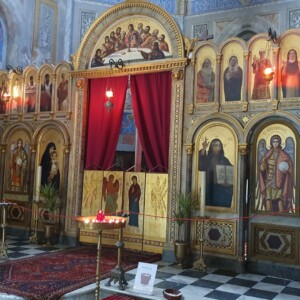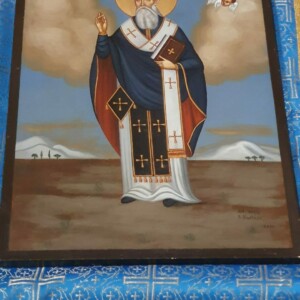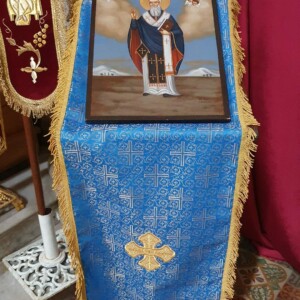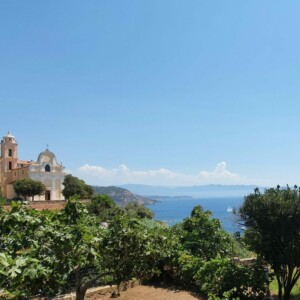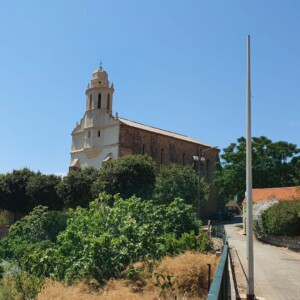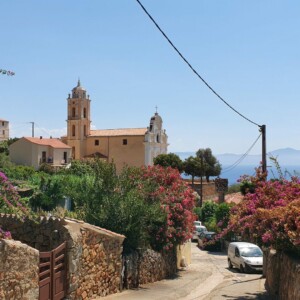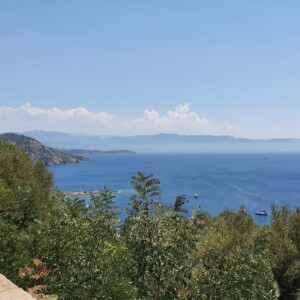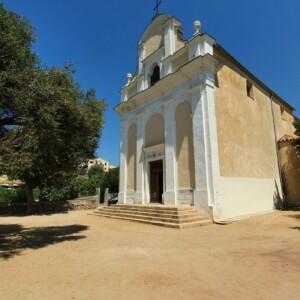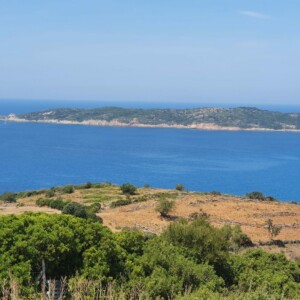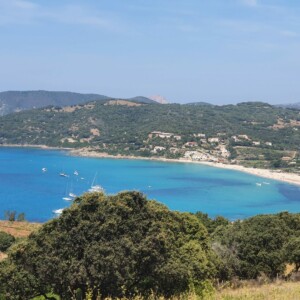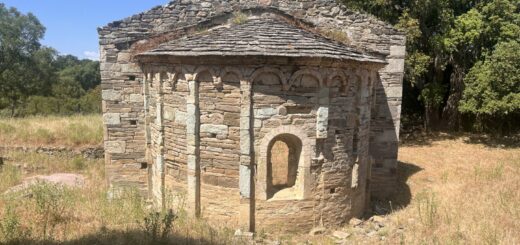The Greek Church in Cargese, Saint Spyridon
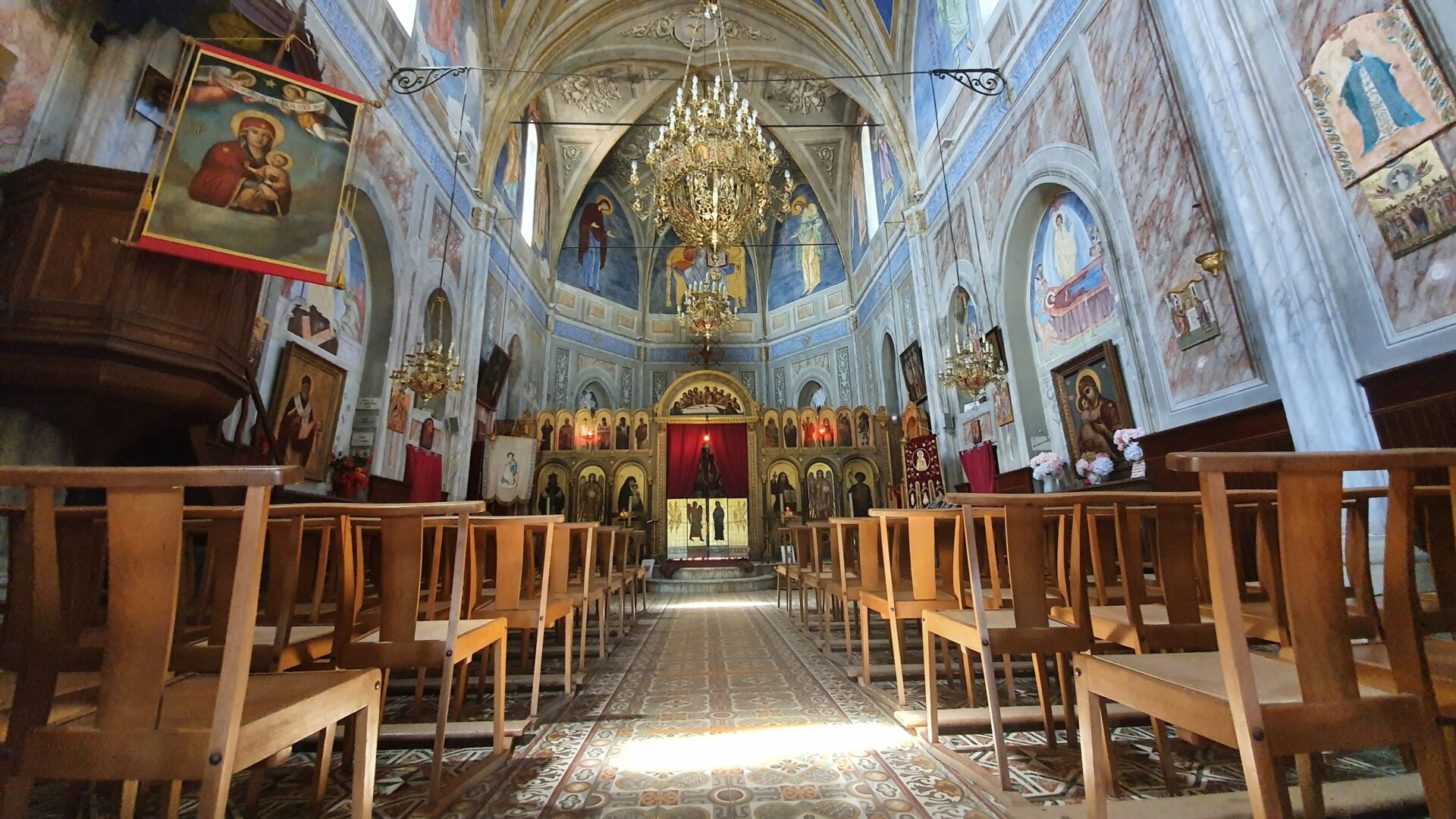
Have you ever heard about a Greek Church in Cargese, Corsica? We head today to the southern part of the island to talk about the fascinating bond that unites one piece of Corsica with another in Greece. To evoke a single chapter in our history that has evolved from war to peace and fraternity. A symbol of a history like no other in Corsica. The Saint Spyridon Church offers the curious a unique cultural experience in Corsica.
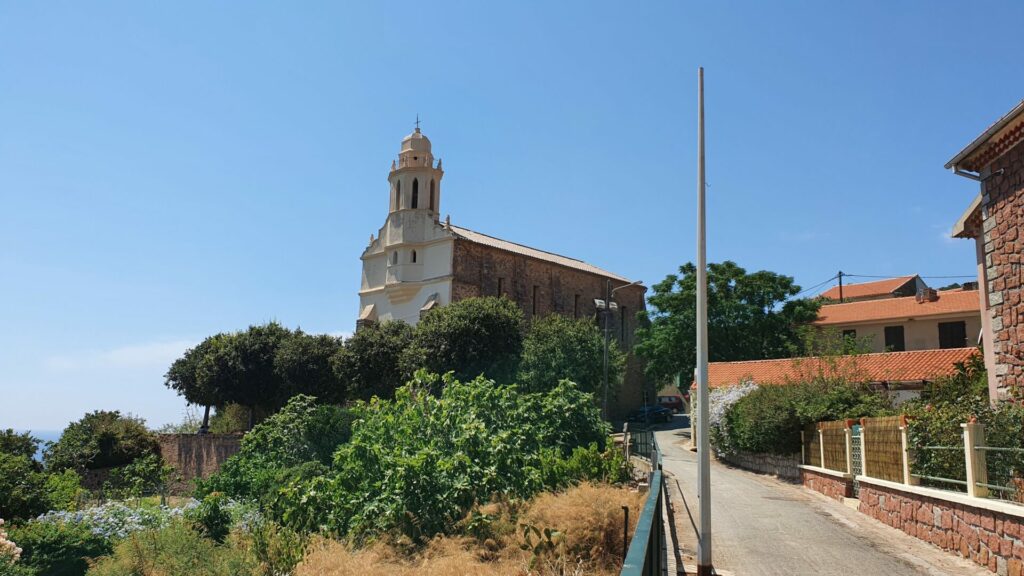
When I was a child, my father told me about the people of Greek origin and the Saint Spyridon Church in Cargese. He had never seen it. In his words emerged a mixture of curiosity and fascination that gave me the feeling that Cargese was a place outside of Corsica. Outside of our world. Without any bad thoughts, just practical considerations. Back then, for so many people living in the small rural villages of the island, already far from the first living store, moving end to end to a place like Cargese demanded a great deal of organization. The kind you often speak from without ever bringing it to fruition.
In my case, I waited until late 2020. Aided (if I may put it that way) by the health crisis that gave me the urge at the first opportunity to escape from the house. I had to travel to that “Greek village” of Cargese to ascertain, at the age of 38 then, whether that church Saint Spyridon was as beautiful as I imagined it as a child.
A singular history uniting Corsica and Greece

Since my father had told me about Cargese, a long time passed. A useful, necessary time, however, to inform myself a little about that village and its single history. I learned how this small Greek community of about 800 people had fled from the villages of Vitylo and Oitylos (Peloponnese) under threat from the Turks. After a long and dangerous journey on the Mediterranean Sea, the refugees had obtained the right to settle in Corsica from the Republic of Genoa, back in 1673. In the parish of Paomia.
I read how since their arrival these places developed, and how they managed to coexist, in relative peace, with the Corsicans. At least until 1729 and the beginning of the Corsican uprisings against Genoa. Unable for most of them to take up arms against a Republic that had given them land to live on, the Greeks of Paomia were driven out by the Corsicans and forced to turn toward Ajaccio. Then, starting in 1773 and the attribution made by the French crown of the place known as “Cargese” to the Greek community, a new chapter opened. Despite several incidents of fleeing to Ajaccio because of tensions with the nearby Corsicans, the entrenchment of traditions that today still form part of the richness of the Corsican culture began there.
The Greek Church in Cargese: a beautiful piece of art
A lot of things make Cargese a different, unique place. The very local surnames, the festivals, the good fortune of being able to enjoy year-round warm and true nature. And of course the Saint Spyridon church. Many, and we Corsicans first to all others, sometimes call it the “Orthodox church” of Cargese. But Saint Spyridon is not an Orthodox church at all. It is specifically a Greek-rite Catholic church. We find at the beginning of this ancient freedom for the people to follow an Eastern-rite faith, the decision made by Genoa upon the arrival of the first Greeks from Paomia, to authorize it as long as it remains under the authority of the Pope. So there is nothing abnormal about the bishop of Corsica presiding over the Easter ceremonies, for instance.
Built from 1854 to 1872, the Saint Spyridon church in Cargese, in addition to being the only Greek-rite church in Corsica, offers visitors a view of a particularly well-maintained monument. There are so many Corsican churches that have fallen into disuse, due to the desertification of rural villages. In this church in Cargese (as in the other Latin church just in front) one feels the faith of the people, the attachment to something beyond being “Oikos Theou,” the house of God, as written above the door. I experienced this visit as the discovery of a different land, and at the same time unusually familiar. It was like observing a tree with varied and deep roots that its people maintained with great effort. And then, more simply, there is that neoclassical style, oriental of course, for which I have no expertise or point of reference, but which struck the simple amateur that I am.
So, when you come to Corsica, take a few steps in Cargese toward the Saint Spyridon Church. Even if you come from a country where architectural splendor is admired at every step, I am sure that, like me, you will appreciate the uniqueness of this “Greek church” and the feeling of well-being to which it invites us.
Saint Spyridon, the Greek Church in Cargese – The Gallery
Here are some photos of the church, and also of the one in front of it, taken in July 2020.

This article is an adaptation of my own work, published in Italian on the website corsicaoggi.com in February 2022.



